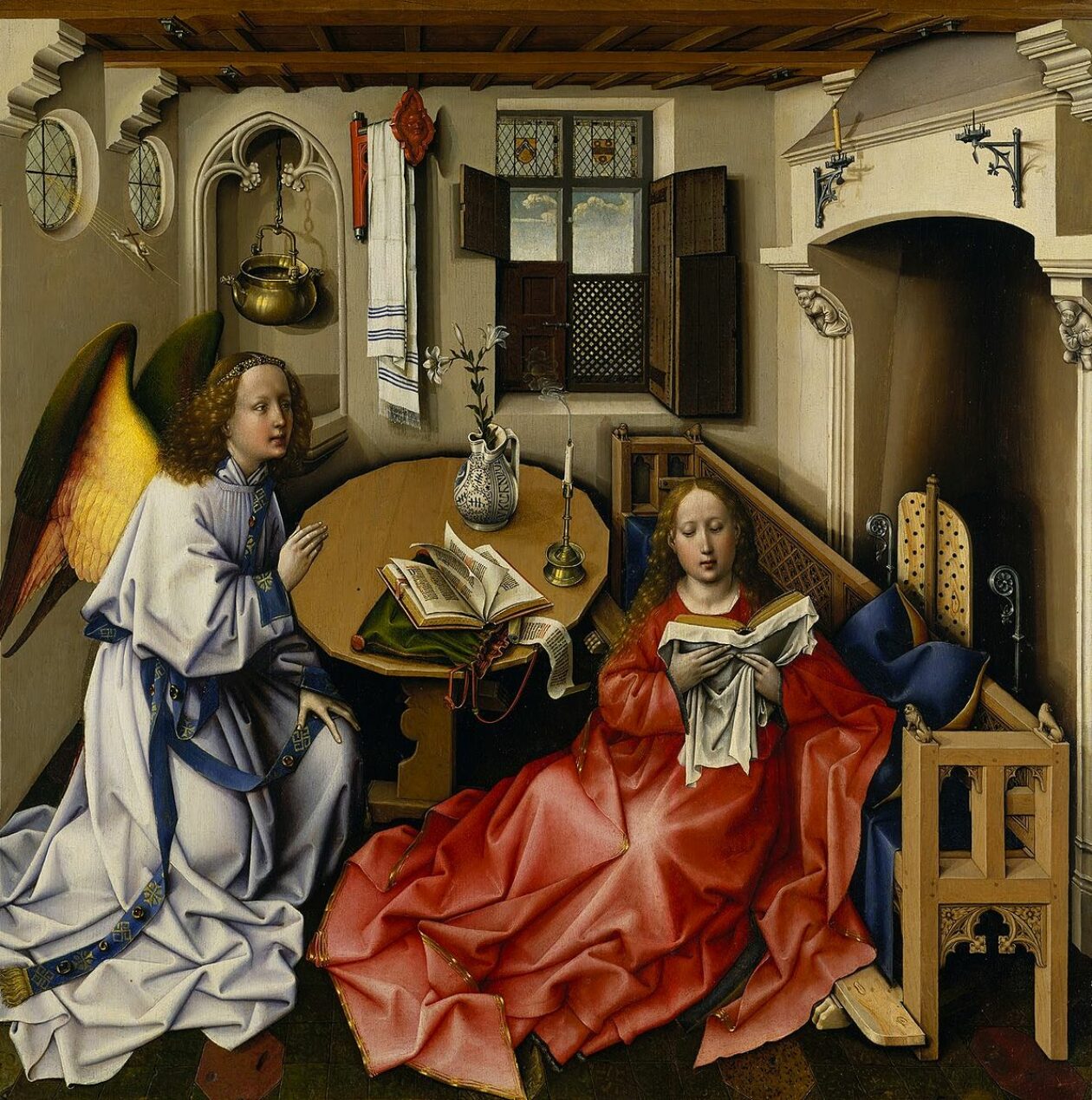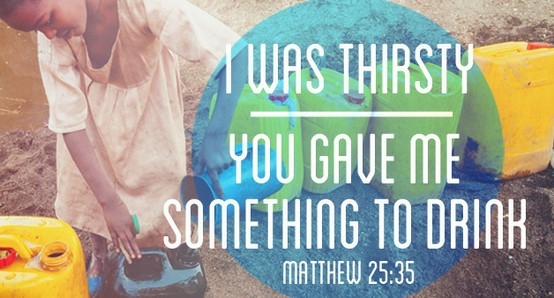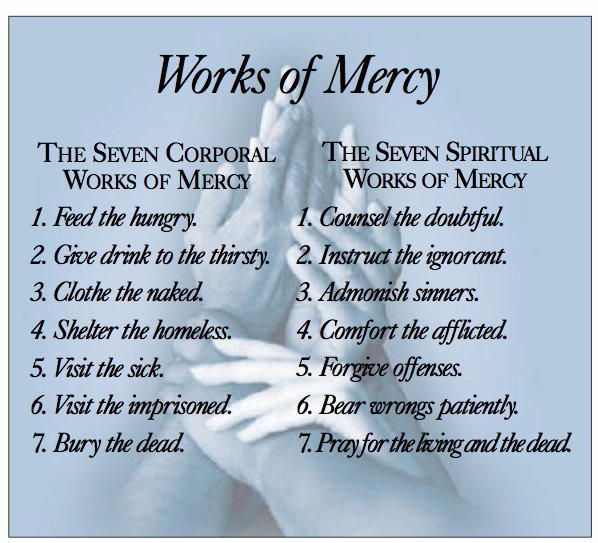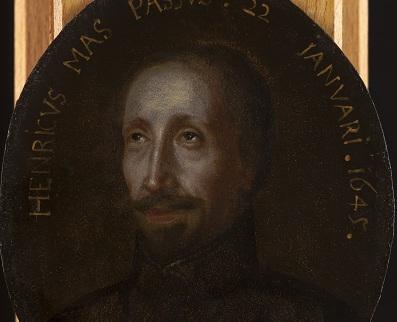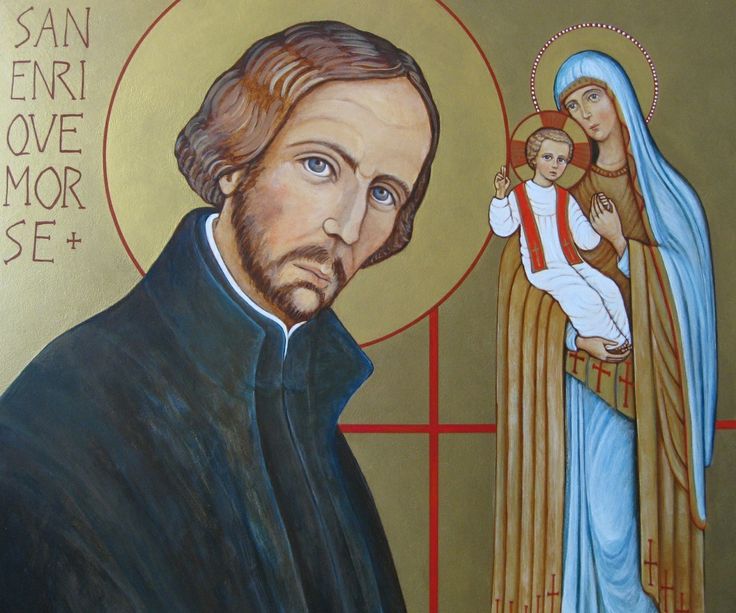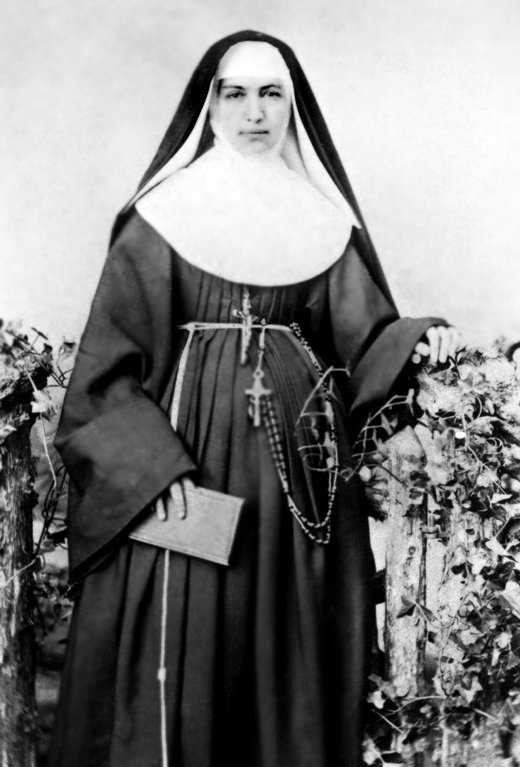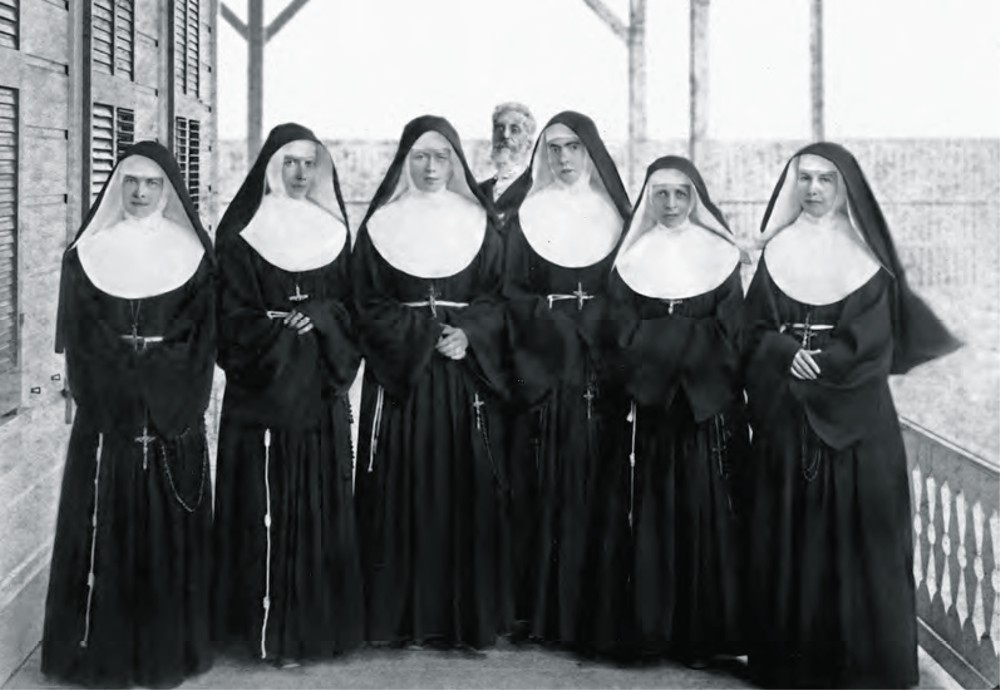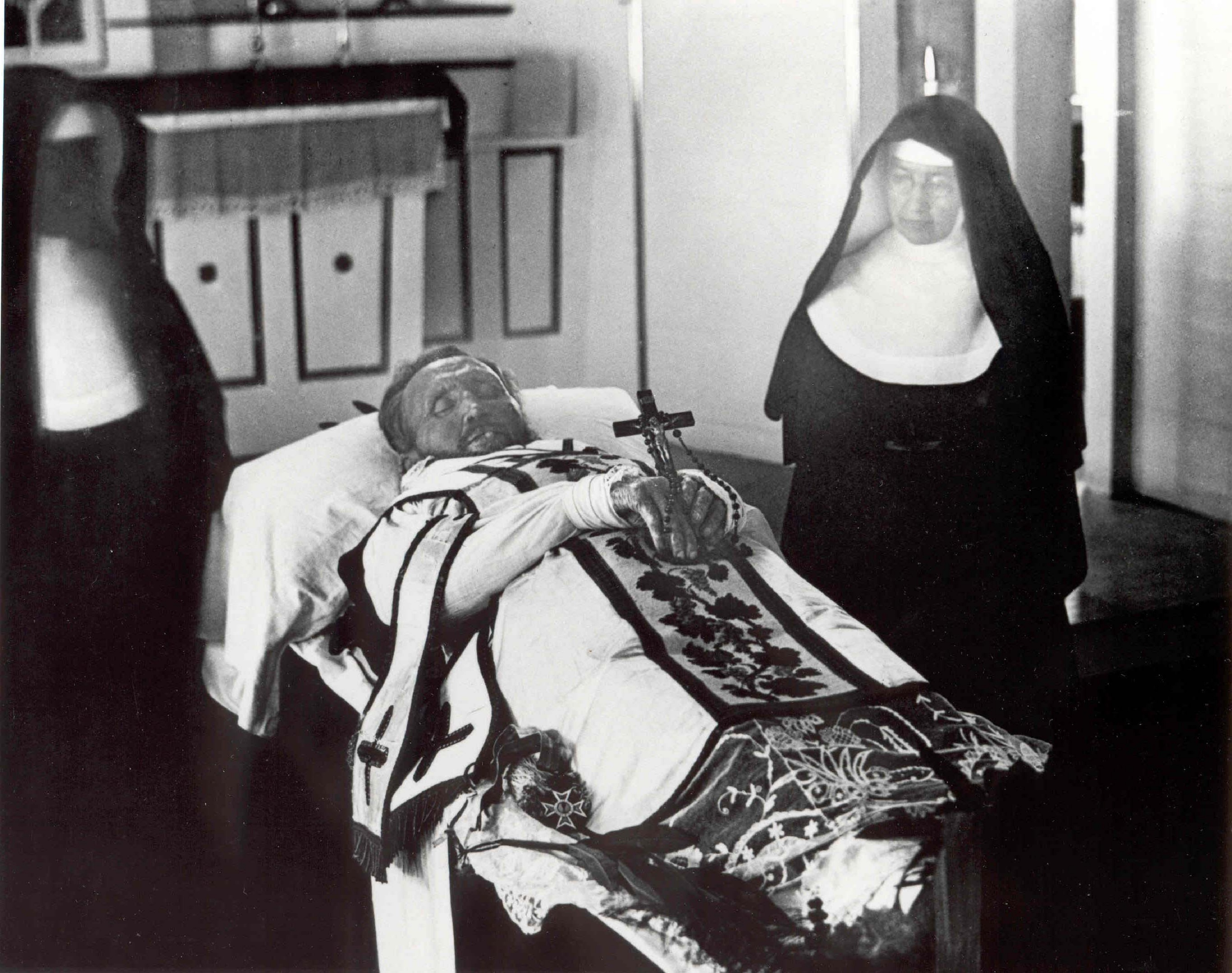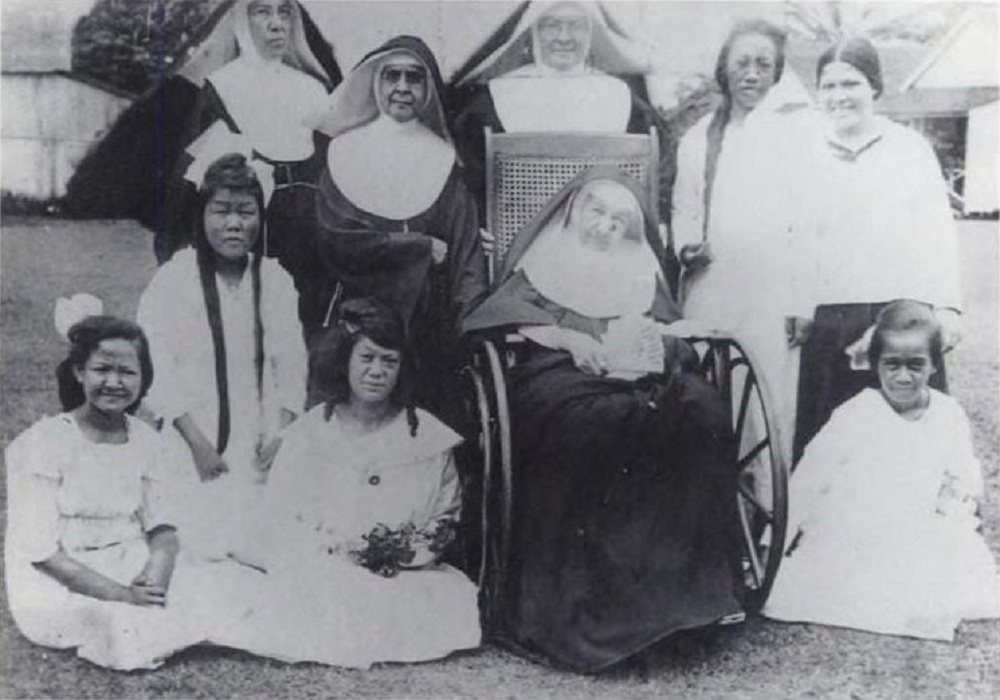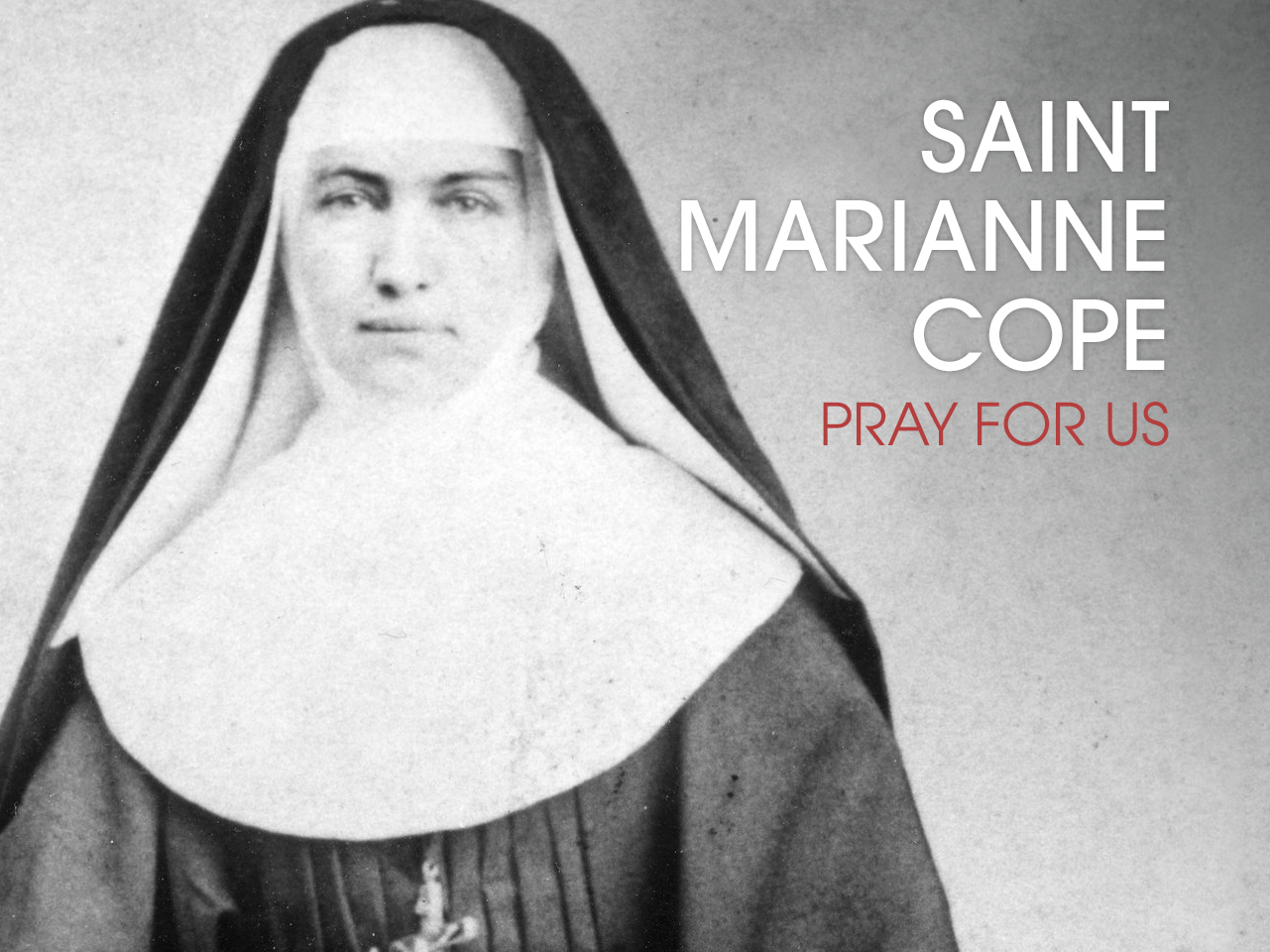
-Sperindio Cagnola, Works of Mercy (Clothe the naked), fresco, 1514 -24, Paruzzaro, San Marcello Church

-by Nicene Guy
“A couple of years ago, there was a kerfuffle over the popular clothing maker Abercrombie and Fitch when some remarks made by their CEO in a then seven-year-old interview surfaced:
The article dredged up a seven-year-old interview with Mike Jeffries, the sixty-eight-year-old, eccentric C.E.O. of Abercrombie & Fitch, rehearsing the principles that made Abercrombie one of the most successful—and most hated—brands in retail history. “In every school there are the cool and popular kids, and then there are the not-so-cool kids,” Jeffries observed. “We go after the cool kids. We go after the attractive all-American kid with a great attitude and a lot of friends. A lot of people don’t belong [in our clothes], and they can’t belong. Are we exclusionary? Absolutely. Those companies that are in trouble are trying to target everybody: young, old, fat, skinny. But then you become totally vanilla. You don’t alienate anybody, but you don’t excite anybody, either.”
One response to this interview was a campaign called “Fitch the Homeless,” in which a man searched second-hand stores for Abercrombie and Fitch clothes, bought them, and then videotaped himself distributing them to homeless people. Was the man behind the campaign acting mercifully by clothing the naked?
Clothing serves a practical purpose as well as a moral one. The practical purpose is the protection of the body from the immediate environment, which includes keeping the body warm in the cold of winter and keeping out the biting and stinging bugs of the summer. The moral purpose is to remind onlookers that the body is the temple of the Holy Spirit (1 Corinthians 3:16-17), and that it is the visible matter of the soul. Another moral purpose of clothing is that it further helps a person to act with modesty and decorum, though these things are both rooted in human dignity (of others and one’s own, respectively) which might be made visible with proper clothing.
These purposes of clothing should make clear a few points about clothing the naked:
The clothing should be in decent condition. “Hand-me-downs” are of course perfectly acceptable, provided that they are in good condition: they are little different from clothing obtained at a second hand store like Goodwill or the Salvation Army or Savers, all of which often sport some very dignified garments.
The clothing should be modest and decorous. This means again that it is in good shape, but also that it fits well and is “presentable.” A part of being presentable is that it it is not overly flashy nor overly big on images etc. Modest means more than just “being covered,” and decorum often goes out the window when the shirt says something offensive or lewd.
Actually, more often that not designer t-shirts lack modesty, decorum, or both; so, for that matter, do the ever-popular jeans with holes torn in them. These may be expensive clothing, but they are not performing the moral (and, for the matter, many of the practical) functions of clothing.
There is a sense in which clothing is also shelter. This is especially true to the survivalist, who will often note that clothing choice is among the most important decisions to make when preparing for a disaster. Providing a nice rain-coat or a warm blanket straddles the line between clothing the naked and harboring the harborless.
Among other things, it should be clear from this list that the “Fitching the Homeless” campaign was not exactly merciful to the homeless. Instead, it was about using the poor to score publicity points against Abercrombie and Fitch. It hinged on the idea that the poor were somehow less dignified, that the clothing “brand” would suffer by being seen on homeless folks—which to be fair was a problem with the CEO of Abercrombie and Fitch more so than with the fellow undertaking the campaign. In short, it accepted the premise of the CEO that the poor are somehow “lesser” than the rest of us. As one commentator at the time put it,
“This stunt is based on the exact same premise offered by Jeffries: that some people are ‘unworthy’ to wear A&F clothes. The hipster doofus handing out A&F clothing to people on the street is doing it because he accepts the notion that they’re somehow lesser than “the rest of us.” His stunt has no bite without this assumption.
And the guy in the video is just passing out clothes to random people, without any sense of whether or not the clothes are wanted or even fit. He gives something to a decidedly plus-sized woman when we already know A&F doesn’t make plus sized clothing. These people are just being used as props.”
While this stunt involved giving clothing to the poor, it left them in truth more naked than before.
An often-misunderstood passage—and there are unfortunately all too-many of these—has our LORD telling us, “Bless those who curse you, pray for those who abuse you. To him who strikes you on the cheek, offer the other also; and from him who takes away your cloak do not withhold your coat as well” (Luke 6:28-29). Here we see a link between clothing the naked and bearing wrongs patiently.
And many sins are of a nature as to leave the sinner “spiritually naked,” they may be an embarrassment to him, may impair his sense of decorum or may be against modesty. A drunkard feels ashamed that he gets drunk as often as he does: so he remedies this shame by getting drunk. Bearing wrongs willingly means being patient with someone whose sins are often as frustrating to them as they are to you. Saint Thomas Aquinas tells us that
“In respect of the result of the inordinate act, on account of which the sinner is an annoyance to those who live with him, even beside his intention; in which case the remedy is applied by ‘bearing with him,’ especially with regard to those who sin out of weakness, according to Romans 15:1: ‘We that are stronger, ought to bear the infirmities of the weak,’ and not only as regards their being infirm and consequently troublesome on account of their unruly actions, but also by bearing any other burdens of theirs with them, according to Galatians 6:2: ‘Bear ye one another’s burdens.’”
To bear another’s wrongs patiently is to develop a sympathy for them: that is, a sympathy for the person suffering, for the person who experiences temptations to sin. We are all tempted by something, after all, whether that something obviously and directly hurts others or whether the harm is more hidden and secretive. There are, in the final scheme of things, no merely “private” sins and no harmless evils, since every sin damages our relationship to God and to His Church.
“Bless those who curse you, pray for those who abuse you. To him who strikes you on the cheek, offer the other also; and from him who takes away your cloak do not withhold your coat as well” (Luke 6:28-29). These are not merely passive measures of nonviolence being counseled by the good shepherd. As one commentator has noted, these are in fact rater “edgy” statements given the time and place they were made:
In Roman Palestine, incidentally, a person of superior rank who slapped you in the face would expect you to respond by crawling in the dust and grovelling before him. (Or, her.) To remain standing, instead, and turn the other cheek, was a little more edgy than we may nowadays appreciate. Similarly, a Roman soldier could lawfully require you to carry his gear for one Roman mile, but not farther. This was a tax in kind, a short-term enslavement. By carrying it for two miles, you were turning the tables. You were now portering in friendship as a free man — and showing him how to do his job. This, too, was edgy. Similarly with him that commandeered thy cloak: give him the coat also, as the charitable act of a free man. Jesus was not counselling passivity, let alone gestures that are “holier than thou.” He was proposing quite practical — and edgy — stratagems for the slave to free himself from the bondage of this world.
In bearing wrongs willingly, we neither retaliate nor grovel, but instead show forth our own sense of dignity, acting with a sense of modesty and decorum: we may in turn inspire others to do the same. There is a certain bondage which comes from holding a grudge: by bearing others wrongs willingly, we free ourselves from that bondage, at least in part. We throw off the shackles of this world, and in return may inspire those who wrong us to do the same. We then take a few faltering steps as free men, as people who are more able to cooperate with God’s grace to overcome our own sins, or perhaps to inspire or help others to overcome theirs.
In acting with decorum and modesty, we become momentary windows for a world which has forgotten what these things are. Perhaps as such we will inspire them to act in accordance with their own dignity as men bearing the image and likeness of God. We need more men of virtue, more women of grace–but we must first become such people.”
Love, and always in need of His mercy,
Matthew
